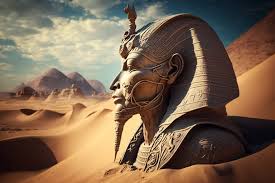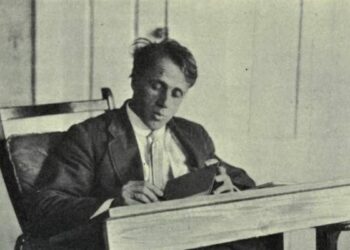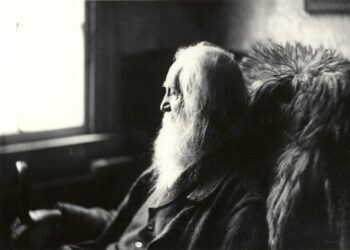Ozymandias by Percy Bysshe Shelley Poem Summary Line by Line is a famous sonnet written by Percy Bysshe Shelley, an English poet, and was first published in 1818. The poem presents a powerful meditation on the nature of human ambition, the passage of time, and the inevitable decline of empires and achievements.
Ozymandias by Percy Bysshe Shelley Poem Summary-The poem begins with a traveler describing a scene to the narrator. He tells of encountering a vast, desolate desert with a crumbling statue of a once-mighty king named Ozymandias.
The traveler describes the statue’s shattered face, the decayed body, and the inscription on its pedestal.
The inscription reads: “My name is Ozymandias, King of Kings; Look on my Works, ye Mighty, and despair!” This arrogant statement suggests that Ozymandias believed his power and achievements would be eternal, and he challenges other rulers to surpass his greatness.
Also Read-
- “The Charge of the Light Brigade” by Alfred, Lord Tennyson Poem Summary
- “Ode to a Nightingale” by John Keats Poem Summary
- “Do not go gentle into that good night” by Dylan Thomas Poem Summary
- “Stopping by Woods on a Snowy Evening” by Robert Frost Poem Summary
However, as the traveler points out, the surrounding landscape is now barren and lifeless. There is no trace of the once-great civilization or any other works of Ozymandias.
The boastful inscription is now a cruel irony, as it serves only to highlight the transience and futility of human accomplishments.
The poem concludes with a reflection on the passage of time and the ultimate insignificance of even the most powerful rulers.
The final lines read, “Nothing beside remains. Round the decay / Of that colossal wreck, boundless and bare / The lone and level sands stretch far away.”
These lines emphasize the complete erasure of Ozymandias’ empire and the relentless march of time, reducing even the most glorious achievements to nothing more than dust.
Ozymandias by Percy Bysshe Shelley Poem Summary Line by Line “Ozymandias” is often regarded as a cautionary tale against hubris, reminding readers of the impermanence of human endeavors and the importance of humility in the face of time’s relentless passage.
Ozymandias by Percy Bysshe Shelley Poem Summary-It serves as a powerful reminder that the most powerful rulers and their empires will eventually fade into oblivion.
Ozymandias Poem
Who said: “Two vast and trunkless legs of stone
Stand in the desert . . . Near them, on the sand,
Half sunk, a shattered visage lies, whose frown,
And wrinkled lip, and sneer of cold command,
Tell that its sculptor well those passions read
Which yet survive, stamped on these lifeless things,
The hand that mocked them, and the heart that fed:
And on the pedestal these words appear:
‘My name is Ozymandias, king of kings:
Look on my works, ye Mighty, and despair!’
Nothing beside remains. Round the decay
Of that colossal wreck, boundless and bare
The lone and level sands stretch far away.”
Conclusion
Q: Who is Ozymandias?
A: Ozymandias is the name of a fictional king mentioned in the poem. It is believed to be a reference to the Egyptian pharaoh Ramesses II, also known as Ozymandias in Greek.
Q: What is the main message of “Ozymandias”?
A: The main message of the poem is the fleeting nature of human power and achievements. It serves as a cautionary tale against hubris and a reminder of the inevitable decline of empires.
Q: What does the inscription on the pedestal of the statue mean?
A: The inscription reads, “My name is Ozymandias, King of Kings; Look on my Works, ye Mighty, and despair!” It conveys the arrogance and pride of Ozymandias, who believed that his power and achievements would endure and surpass those of other rulers.
Q: What is the historical context of “Ozymandias”?
A: “Ozymandias” was written during the Romantic period in England, a time marked by a fascination with nature, individualism, and a critique of social and political structures. The poem reflects the disillusionment with the power of kings and the destructive effects of excessive ambition.

















